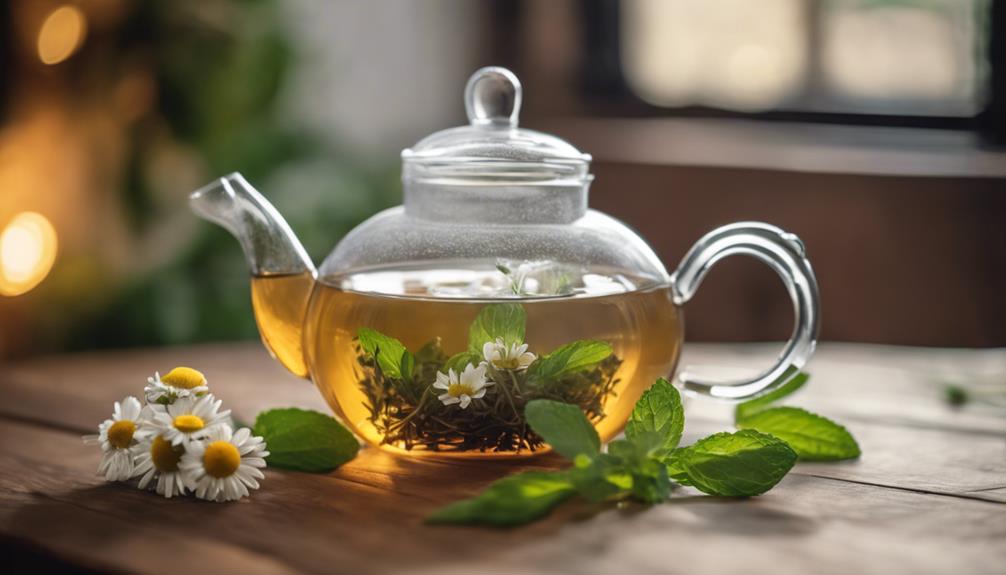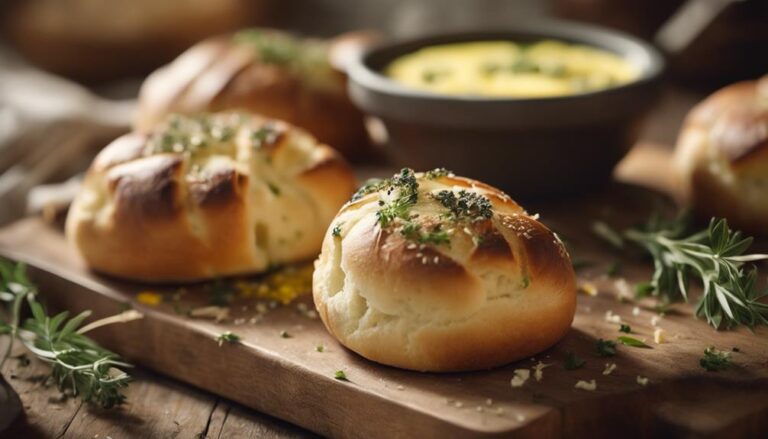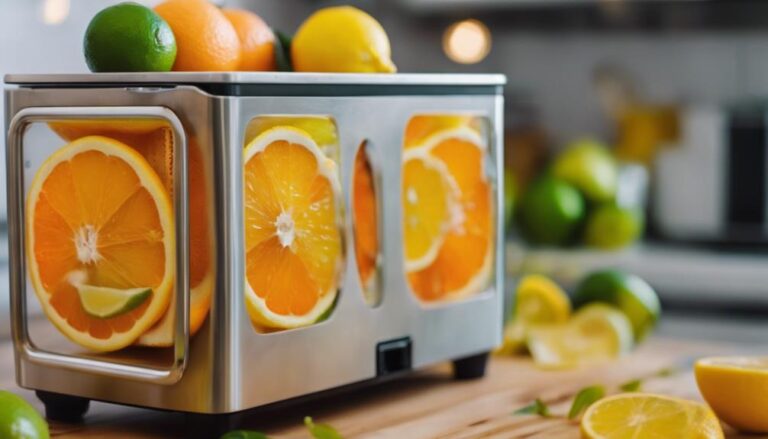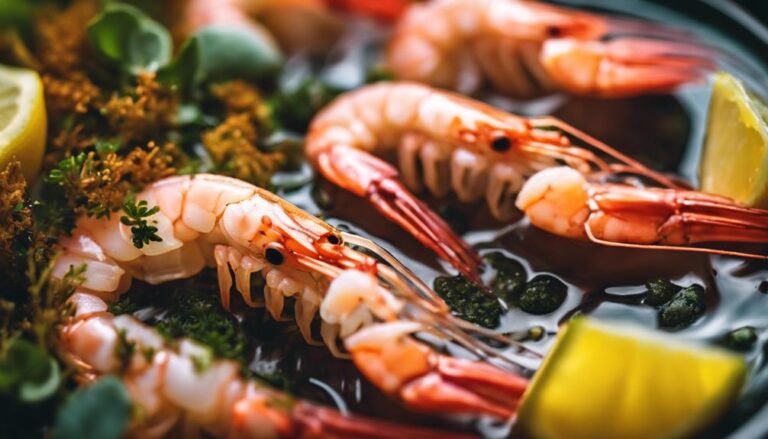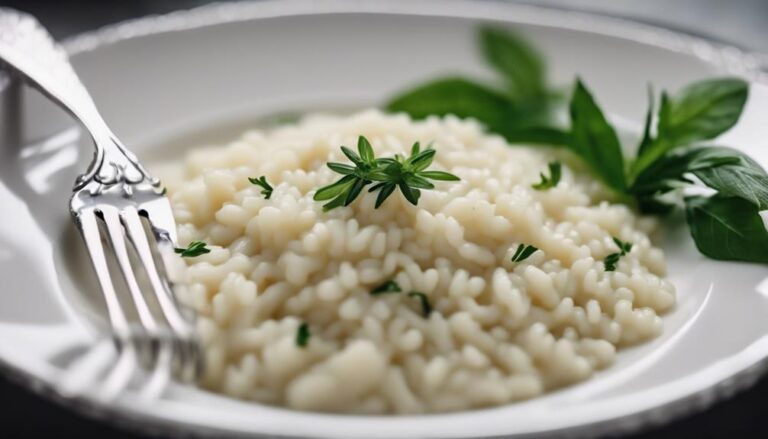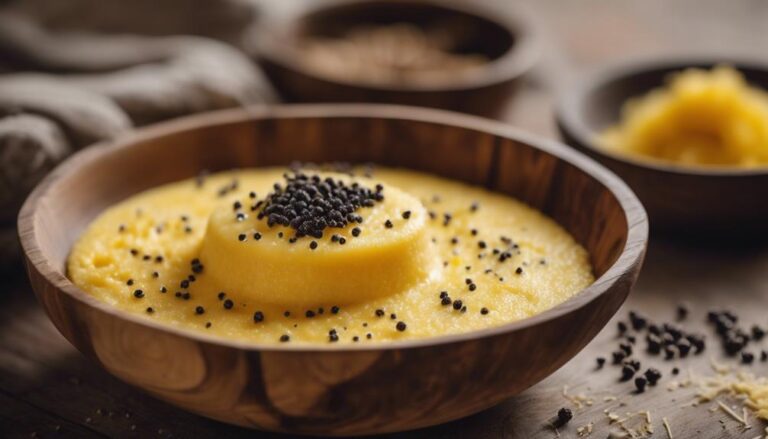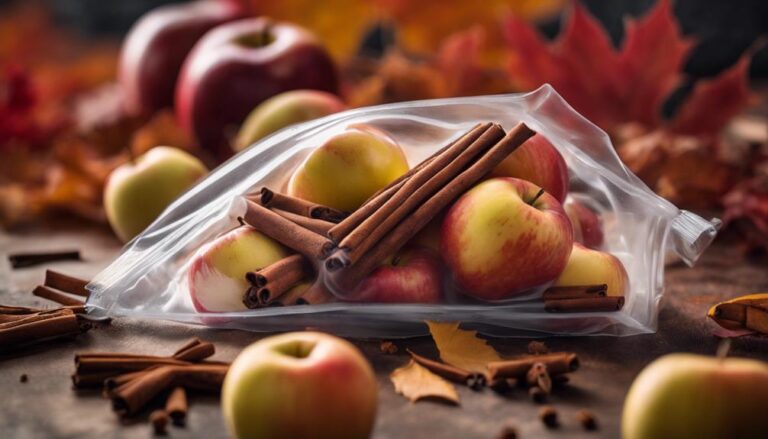Sous Vide Herbal Decaf Tea
Enjoy a perfect cup of sous vide herbal decaf tea where precise temperature control extracts ideal flavors for a delightful experience. The method enhances flavors from herbs like chamomile and peppermint, offering a blend of soothing aromas. With their decaffeinated nature, you can savor these teas at any time. The sous vide technique maximizes the extraction of essential oils from the herbs, enriching both taste and health benefits. For more insights on enhancing your tea experience with sous vide, discover further information that can elevate your next cup to new heights.
What You Will Learn Here
- Sous vide method offers precise temperature control for optimal herbal decaf tea flavor extraction.
- Decaffeinated herbal teas like chamomile and peppermint provide a blend of flavors and aromas.
- Enjoy herbal decaf teas at any time of day due to their decaffeinated nature.
- Sous vide enhances extraction of essential oils from herbs, offering both flavor and health benefits.
- This method ensures a perfect brew with rich, soothing flavors for a relaxing tea experience.
Tea Origins
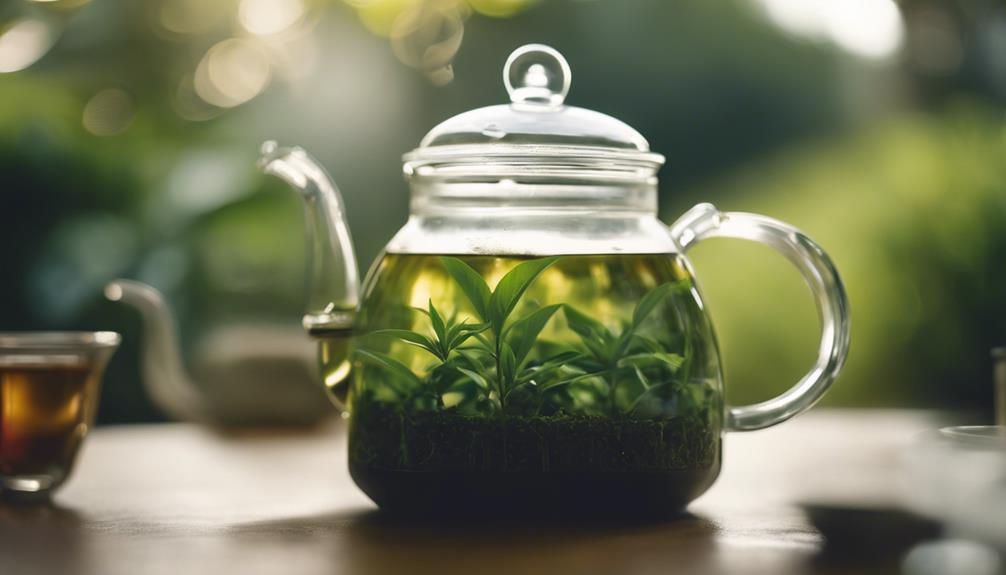
Tea has a rich history that spans centuries, with intricate cultural customs and practices surrounding its consumption.
Different regions around the world cultivate tea, each offering unique flavors and characteristics.
Understanding the origins of tea can provide insight into the diverse and fascinating world of this beloved beverage.
Tea History Overview
Originating in ancient China, the history of tea traces back thousands of years to a time when its consumption was intertwined with cultural rituals and medicinal practices.
Legend has it that Emperor Shen Nong discovered tea around 2737 BCE when tea leaves blew into a pot of boiling water he was near, creating a delightful aroma.
The early Chinese dynasties, such as the Tang and Song, elevated tea drinking to an art form, with intricate ceremonies and specialized utensils.
From China, tea spread to Japan, Korea, and eventually to the West through trade routes and exploration.
In the 17th century, tea became a fashionable beverage in Europe, leading to the establishment of large-scale plantations in colonies like India and Sri Lanka.
The global tea culture continues to evolve, with different countries developing unique preferences and brewing methods, making tea a beloved and diverse beverage enjoyed by millions around the world.
Cultural Tea Customs
Throughout ancient China, the consumption of tea was intricately woven into cultural rituals and medicinal practices. Tea's origins date back over 5,000 years, where legend has it that Emperor Shen Nong discovered tea when some leaves blew into his pot of boiling water. From these humble beginnings, tea became a symbol of respect, gratitude, and harmony in Chinese culture. Tea ceremonies, like the Gongfu tea ceremony, were developed to honor guests and showcase the art of preparing and serving tea.
Tea houses also played a significant role in Chinese society, serving as gathering places for intellectuals, poets, and friends to share ideas over a cup of tea. Traditional Chinese medicine embraced tea for its healing properties, believing it could cleanse the mind and body. As tea spread beyond China, different cultures adopted their unique customs and rituals surrounding tea, each adding their own flavors and traditions to the rich tapestry of tea culture worldwide.
Tea Cultivation Regions
Nestled among lush landscapes and diverse climates, various regions around the world have become renowned for their unique contributions to the rich tapestry of tea cultivation practices. China stands as the birthplace of tea, with its vast tea gardens in provinces like Yunnan, Fujian, and Zhejiang. The Chinese have mastered the art of tea cultivation over thousands of years, producing a wide array of teas from delicate white teas to robust black teas.
Moving to Japan, the meticulous Japanese tea gardens in regions like Uji and Shizuoka are famous for their production of high-quality green teas, especially matcha. Japan's tea culture is deeply rooted in tradition and ceremony, shaping the way tea is grown and consumed.
In India, the picturesque Darjeeling and Assam regions are celebrated for their distinct black teas. Assam, known for its malty and bold flavors, thrives in the lowlands, while Darjeeling's high-altitude gardens yield teas with floral and muscatel notes.
Sri Lanka, with its Ceylon tea plantations, offers a range of flavorful black teas grown in different elevations, each imparting unique characteristics to the brew. These regions, among others, play a crucial role in the global tea industry, each contributing a piece to the intricate puzzle of tea cultivation worldwide.
Tea Variety Options
When selecting tea varieties for your sous vide herbal decaf tea, contemplate the flavors and aromas that best complement your preferences and desired experience. Different tea varieties can offer a wide range of tastes and scents, allowing you to tailor your herbal decaf tea to suit your unique palate. Here are some options to contemplate:
- Chamomile: Known for its calming properties, chamomile tea has a mild, slightly sweet flavor with hints of apple. It can be a soothing choice for relaxation.
- Peppermint: Invigorating and revitalizing, peppermint tea offers a cool, minty taste that can help with digestion and provide a burst of energy.
- Lavender: With its floral and slightly sweet flavor, lavender tea can bring a sense of tranquility and relaxation to your herbal decaf tea blend.
- Lemongrass: Bright and citrusy, lemongrass tea adds a zesty kick to your drink and is known for its refreshing and cleansing properties.
- Rosehip: Tart and fruity, rosehip tea is rich in vitamin C and offers a vibrant, tangy flavor that can add depth to your herbal decaf tea infusion.
Experimenting with these tea varieties can help you create a personalized sous vide herbal decaf tea that caters to your taste preferences and desired benefits.
Herbal Decaf Tea Recipes

If you're looking to enjoy a soothing cup of herbal decaf tea, you'll find some delightful recipes in store for you.
Try out the comforting Decaf Chamomile Tea Blend for a relaxing evening wind-down.
Alternatively, the Lavender Infusion Recipe offers a fragrant twist or indulge in the invigorating Decaf Mint Tea Blend for a revitalizing pick-me-up.
Decaf Chamomile Tea Blend
To create a soothing Decaf Chamomile Tea Blend, start by gathering your preferred decaffeinated chamomile tea bags and a heat-safe container.
- Select your favorite decaffeinated chamomile tea bags: Choose a high-quality brand that suits your taste preferences.
- Boil water: Heat water to the appropriate temperature for steeping tea.
- Steep the chamomile tea: Place the decaf chamomile tea bags in the heat-safe container and pour the hot water over them.
- Cover and let it steep: Allow the tea bags to steep for the recommended time to extract the flavors fully.
- Sweeten if desired: Add honey, sugar, or any other sweetener of your choice to enhance the taste.
Enjoy the calming and aromatic Decaf Chamomile Tea Blend you've just prepared. This herbal infusion is perfect for unwinding after a long day or relaxing during moments of self-care.
Lavender Infusion Recipe
For a delightful twist on your herbal decaf tea experience, consider infusing lavender into your next brew. Lavender brings a floral and slightly sweet aroma that can elevate the calming properties of your tea. Here's a simple recipe to create a soothing lavender-infused herbal decaf tea:
- Start by boiling water to the desired temperature for your tea blend.
- Add a teaspoon of dried culinary lavender buds to a tea infuser or directly into your teapot.
- Pour the hot water over the lavender and let it steep for about 5-7 minutes.
- Remove the infuser or strain the lavender buds from the tea.
- Enjoy your fragrant and relaxing lavender-infused herbal decaf tea either hot or chilled over ice.
Lavender is known for its calming effects and subtle floral taste, making it a perfect addition to your decaf tea collection. Experiment with different steeping times to find your preferred level of lavender flavor intensity.
Decaf Mint Tea Blend
Consider incorporating fresh mint leaves into your herbal decaf tea blend for an invigorating and aromatic twist. Mint not only adds a rejuvenating flavor but also offers potential health benefits.
Here are five ways to create a delightful decaf mint tea blend:
- Fresh Mint Leaves: Pluck fresh mint leaves from your garden or purchase them at a local market for the best flavor.
- Peppermint and Spearmint Combo: Combine peppermint and spearmint leaves for a nuanced minty taste in your tea.
- Drying Mint Leaves: Dry mint leaves by hanging them or using a dehydrator to preserve their flavor for future use.
- Mint Tea Bags: Opt for mint tea bags if you prefer a convenient and quick way to enjoy minty goodness.
- Iced Mint Tea: Brew a strong batch of mint tea, chill it in the fridge, and serve over ice for a revitalizing summer beverage.
Experiment with these suggestions to tailor your decaf mint tea blend to your preferences and enjoy a soothing cup of herbal goodness.
Tea Brewing Techniques
When brewing tea, remember that the duration of steeping can greatly affect the flavor.
The temperature of the water used plays a vital role in extracting the right essence from the tea leaves.
Additionally, the type and quality of tea leaves you choose will determine the overall taste of your brew.
Brewing Time Variations
To achieve ideal flavor extraction when brewing herbal decaf tea using the sous vide method, adjust the brewing time according to your taste preferences. The brewing time can greatly impact the strength and taste of your tea. If you prefer a lighter flavor, consider reducing the brewing time by 5-10 minutes. Conversely, for a stronger brew, you may want to increase the brewing time by the same margin.
Experimenting with different brewing times allows you to tailor the tea to your liking. Keep in mind that herbal decaf teas can be more delicate than traditional teas, so be mindful not to overbrew, as it may result in a bitter taste. It's a good idea to start with the recommended brewing time and then adjust based on your personal taste preferences.
Water Temperature Importance
Maintaining the correct water temperature is crucial for successful tea brewing techniques. The temperature at which you steep your tea can greatly impact its flavor profile. Different types of tea require specific water temperatures to bring out their best qualities. For herbal or decaf teas, a lower temperature around 200°F (93°C) is ideal. Boiling water, which is around 212°F (100°C), might scorch delicate herbal blends, resulting in a bitter taste.
To achieve the perfect water temperature, consider using a thermometer to monitor the heat. Bringing the water to the desired temperature and then removing it from the heat source can help prevent overheating. Another method is to let boiling water cool for a few minutes before pouring it over the tea leaves. By paying attention to water temperature, you can make sure that your herbal decaf tea brews to perfection, releasing all the delightful flavors without any unwanted bitterness.
Tea Leaf Selection
Selecting high-quality tea leaves is essential for achieving the best flavor in your herbal decaf tea brew. When choosing tea leaves for your sous vide herbal decaf tea, opt for loose-leaf teas over tea bags for better flavor extraction. Loose-leaf teas are often of higher quality and provide a more robust taste profile.
Consider the type of tea you prefer when selecting your tea leaves. Whether you enjoy the floral notes of chamomile, the earthy tones of rooibos, or the invigorating taste of peppermint, the type of tea leaf you choose will greatly impact the final taste of your brew.
Inspect the tea leaves for freshness and aroma. High-quality tea leaves should be vibrant in color and have a strong, pleasant scent. Avoid tea leaves that appear dull or have a stale odor, as they may result in a lackluster brew.
Final Thoughts
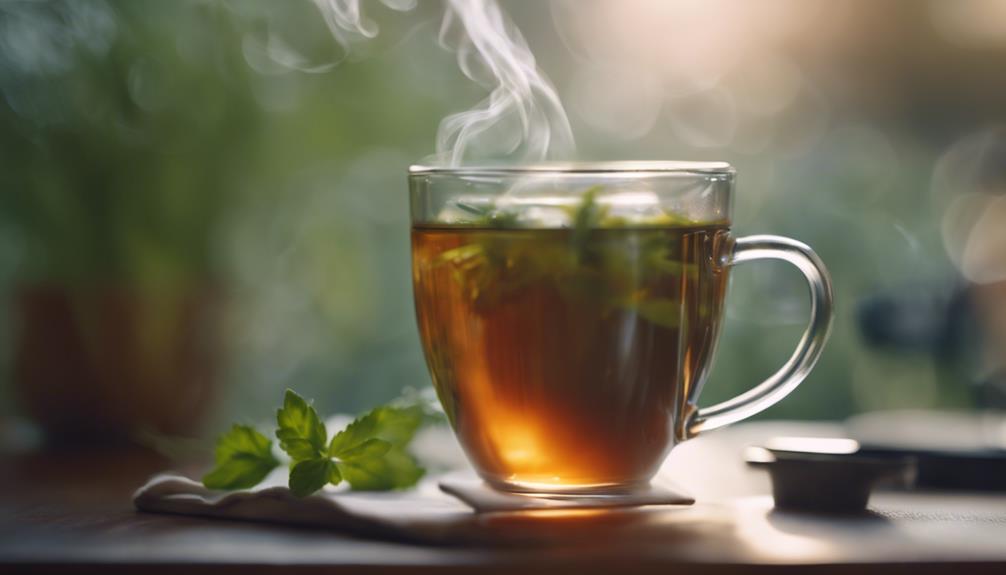
Considering the overall experience with Sous Vide Herbal Decaf Tea, you'll find a delightful blend of flavors and aromas that make it a soothing choice for any time of day. The gentle infusion of herbs like chamomile, lavender, and peppermint creates a harmonious symphony of taste that's both calming and invigorating. The decaffeinated nature of this tea ensures that you can enjoy its benefits without worrying about late-night jitters or disrupting your sleep cycle.
One of the standout features of Sous Vide Herbal Decaf Tea is its convenience. The sous vide method allows for precise temperature control, ensuring that the delicate flavors of the herbs are extracted to perfection. This results in a consistently delicious brew every time you make it. Additionally, the sous vide technique enhances the extraction of essential oils from the herbs, maximizing both the flavor and the health benefits of the tea.
Frequently Asked Questions
Can I Reuse the Herbs After Making Sous Vide Herbal Decaf Tea?
You can reuse the herbs after making your tea. Simply dry them out thoroughly first. This way, you can enjoy a second round of flavor from the herbs without wasting them. Get creative with your tea!
Is It Safe to Leave the Tea Bags in the Sous Vide for Longer?
Leaving tea bags in the sous vide for longer than recommended may result in oversteeping, potentially leading to a bitter taste. It's best to follow the suggested timing for best flavor extraction and avoid any negative outcomes.
How Can I Incorporate Other Flavors Into Herbal Decaf Tea?
To infuse more flavors into herbal decaf tea, try adding fresh herbs like mint or lavender, citrus zest, or a touch of honey. Experiment with spices such as cinnamon or ginger for a unique and aromatic blend.
Are There Specific Health Benefits Associated With Sous Vide Tea?
When you explore sous vide tea, consider its potential health benefits. Research suggests that sous vide can help retain nutrients, enhance flavors, and possibly boost antioxidants in tea, contributing to a richer and potentially more beneficial tea experience.
Can I Use Fresh Herbs Instead of Dried Ones for the Tea?
Yes, you can use fresh herbs instead of dried ones for the tea. Fresh herbs can impart a more vibrant and aromatic flavor profile to your beverage. Experiment with different combinations to find your favorite blend.
Conclusion
To sum up, sous vide herbal decaf tea offers a unique and convenient way to enjoy a soothing cup of tea without the caffeine.
With a variety of herbal options to choose from and simple brewing techniques, you can easily create delicious and relaxing tea blends in the comfort of your own home.
Whether you're looking to unwind after a long day or simply enjoy a caffeine-free beverage, herbal decaf tea made with sous vide method is a great choice.
